“In the past you might have said, ‘That’s only for a metal or super high-performance hard-rock guy.’ Well, maybe not”: Allen Abbassi has overseen every Fender electric guitar since 2007 – but he’s still pushing the envelope
The Director of Electric Guitars on the Ultra II line, the future of high-end offsets – and why Fender is keeping one eye on YouTube
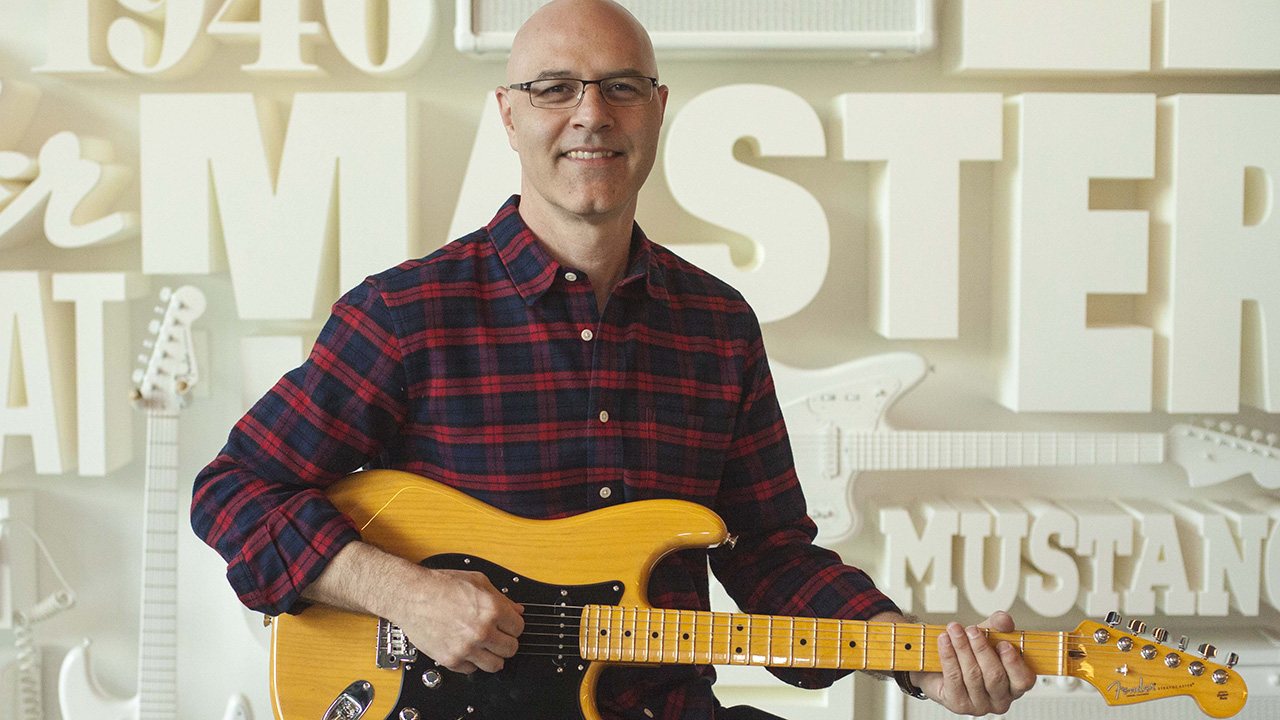
Allen Abbassi might not be a household name to every guitarist, but the products he’s helped to develop during his 24 years at Fender most certainly are. As Director of Fender Electric Guitars, every launch bearing the big F on the headstock since 2007 has had to pass his personal test of feel and tone.
The Player Series, American Professional, American Vintage, Alternate Reality, Parallel Universe and, of course, just about every Fender signature guitar of the last 18 years – from the Mike McCready Strat to the Tom DeLonge Starcaster – have all fallen under Abbassi’s remit.
Now he’s presenting Fender’s top-of-the-line Ultra II – “the sports car versions, if you will” – of the firm’s most beloved models, including the Strat, Tele, P and J bass and, in a surprise addition, the recently developed Meteora offset.
“If Fender is a spectrum from vintage to modern, these are all the way to the right on the modern spectrum,” Abbassi says.
You’ll find compound radius necks, noiseless pickups, sleek contouring, locking tuners and even Luminlay side dots as standard. They are quite simply the most forward-thinking Fenders you’ll find.
The guitarist of today is increasingly hard to pigeonhole, in both aesthetic and playing style; so while you might presume the Ultra II is designed purely to appeal to tech-heads, Abbassi notes its remit has widened considerably.
“It's also for players who seek a guitar that gets out of their way and plays effortlessly,” he explains. “It's all noiseless pickups, so it’s great for players who favor giant pedalboards, or who play clubs with noisy electricity, or play in the studio and they want to be very quiet.
Get The Pick Newsletter
All the latest guitar news, interviews, lessons, reviews, deals and more, direct to your inbox!
“I’ve even had R&B and jazz players, who you’d have thought would be interested in more vintage stuff, pick up an Ultra and fall in love with it.”
Sat in Fender’s London HQ and artist showroom – a former stained glass window factory, with a top room in the church-like eaves lined with glittering models – we want to know what it takes to develop the company’s fastest-playing neck; how Abassi pushes the envelope without chopping off a Strat horn; and why, in the Ultra II line, the Meteora is in but the faithful Jazzmaster is out.
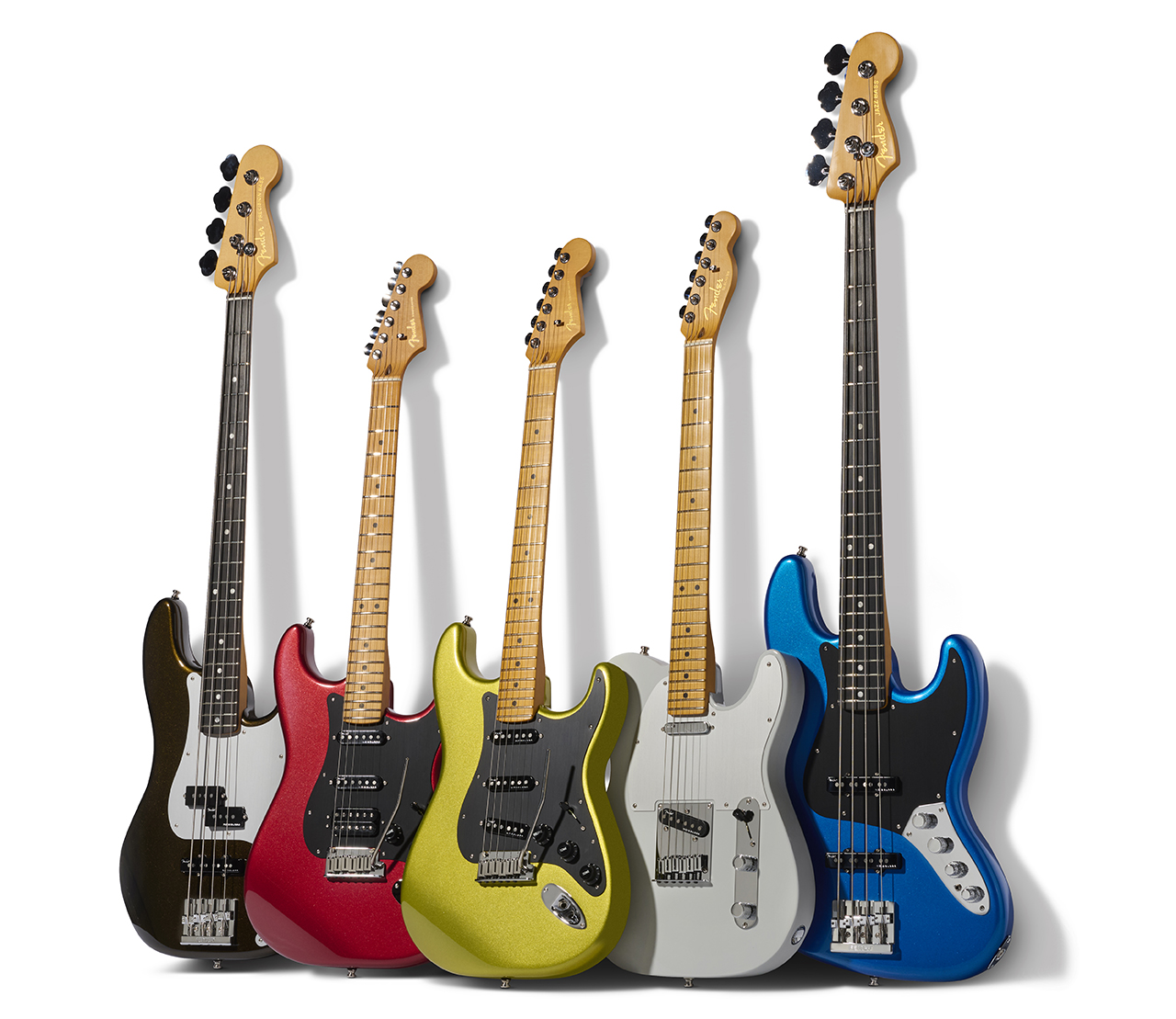
The early leaps in Fender development – particularly between the Tele and the Strat – came from talking directly to players. With social media, YouTube, pro players, home players and so on, how do you find the voices to listen to?
“We definitely read a lot about what players are talking about on forums. We watch YouTube a lot. We talk to artists and dealers. And when people are in the office in Hollywood, we talk directly to them.
“Sometimes when we’re working on a project like Ultra, we’ll call on friends who are professionals – Brett Simons, Mason Stoops, Jamie Kime, Jorgen Carlsson – and say, ‘Hey, why don't you come visit? I’m working on something I’d like you to hear.’”
One of the big claims is that the Ultra II is Fender’s fastest-playing neck. How do you determine something like that?
“Well, it’s not necessarily scientifically tested! But most of us in the product department have been around Fender for a long time. I’ve pretty much touched every new Tele or Strat neck we’ve made since 2007, so just from experience, I can tell the difference in what ‘a fast-playing neck’ would be versus a non-fast playing.

“Some of it’s intuitive: things that, as a player, you’d just agree are true. For instance, changing from lacquer to a satin-finish urethane-based neck –especially with the treatment we apply – you can just feel that it’s really smooth and easy to move your hand up and down the neck.
“And some of it’s experience; these necks definitely feel faster to me. When we’ve put them in the hands of players, they agree. I don’t know if that's leading the witness! But most players agree that the rolled edges and the slim neck, and this ‘Goldilocks’ thickness, feel like a very fast-playing neck.”
The Meteora is really neat because it’s a new shape for Fender. You don’t see us doing a lot of new shapes
How many iterations do you go through to get to that point?
“It could be anywhere from just two or three, or we could have our R&D department make 10 different versions. We have such a large pool to draw from of vintage-style neck shapes that it can be challenging to decide what’s just right.”
As you keep adjusting the parameters of modern designs, where’s the line – when is a Strat no longer a Strat, or a Tele no longer a Tele?
“Fender is known for a certain tonal quality. It’s described as ‘crystalline,’ ‘bell-like,’ ‘brilliant,’ ‘trebly.’ With a Strat you have quackiness; with a Tele you have twanginess. If you start to stray from those core tones, you start to get away from what a Strat or a Tele is.
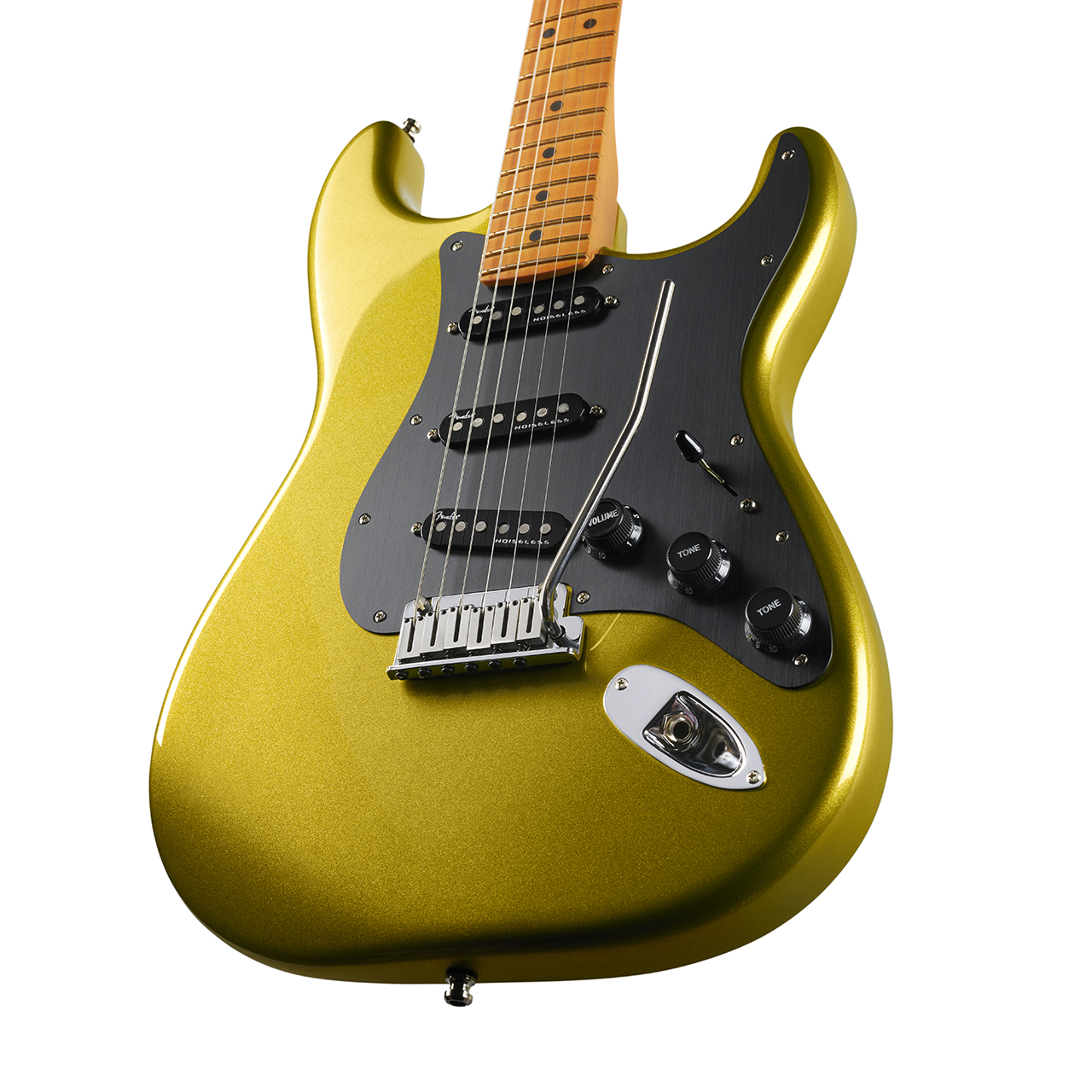
“These instruments are very versatile, and tons of different types of players from all different genres use them, but you can always kind of hear if it's a Tele or a Strat – and a lot of that has to do with the quality of the tone from the pickups. Once we say, ‘That really doesn't have the twang and snap of a Tele pickup,’ we feel like we’ve gone too far.
“With the body shapes, obviously we can modify and tweak small parts like contours. But we’re not gonna chop off a horn, and we’re not gonna radically cut out another part. There’s legacy and history there that we’re careful about maintaining. So with the bodies it’s easier to know when you’ve crossed the line – you want a Strat to look like a Strat.”
Why did you decide to drop the Jazzmaster Ultra from the line in favor of the Meteora?
“One of the main reasons is we want to always be fresh and try something new. The Meteora is really neat because it’s a new shape for Fender. You don’t see us doing a lot of new shapes.
“We wanted to feature it in a high-end series. It had been just a limited edition, then we put it in the Player Plus line, and it did pretty well there. We want to have it available in as many different forms, to see what artists are interested in it.
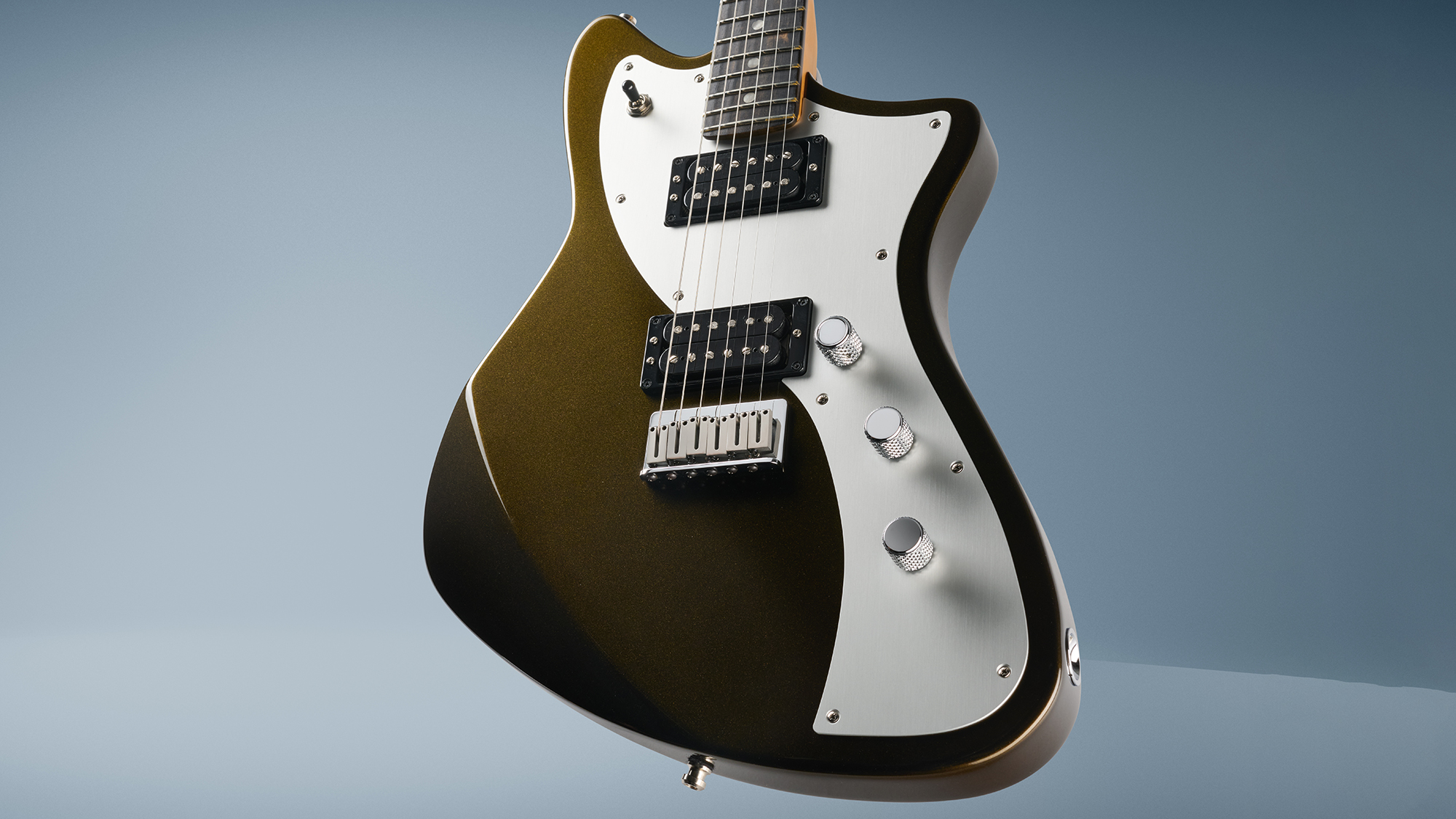
“Ultra II is for a more advanced player who’s into high performance. That’s the type of player we feels a Meteora would suit. It’s kind of a futuristic-looking Jazzmaster – like a sports car version. We’ve loaded it with some incredible new Haymaker humbuckers that are tonally incredible, and they’re a little bit more aggressive.”
So it’s for the modern-minded Fender fan.
“More than a Jazzmaster, because that’s a very traditional instrument. Bringing that into the Ultra high-end performance line is fun, but maybe a dichotomy. It almost doesn’t fit.”
Luminlay is an awesome feature that people like, so why wouldn’t a Fender player like it?
The GuitarWorld.com team has been campaigning for high-end offsets from Fender brands. In particular, we loved Mike Stringer’s custom Jackson Surfcaster, and Jackson’s Misha Mansoor build. Are there plans for high-end offsets in the main Fender range?
“Offsets, in general, have grown in popularity quite a bit. So you’ll see more high-end offsets coming from Fender in the future. I can’t reveal anything specifically. In our American Vintage line, that’s more high-end, we always have a Jazzmaster in there. That’s a trend you’re gonna see continue: offering more modern versions.”

It appears there is an increasing crossover between Fender brands shapes. Is it a totally siloed development for you? Fender does Fender, Jackson does Jackson, Charvel does Charvel, and so on?
“There’s a little bit of crossover, because we’re friends with those guys, and we talk about what we’re doing, and innovations can be shared across brands – pickup development, neck shapes, finishes and things like that.
“For example, Luminlay side dots are a big part of the new Ultra II line. It’s a very, very modern feature and they work remarkably well. Our Charvel/Jackson line has been using that for a while, but we’d never tried it in Fender. It’s an awesome feature that people like, so why wouldn’t a Fender player like it? In the past you might have said, ‘That’s only for a metal or super high-performance hard rock guy.’ Well, maybe not!”
Another area where you have room to experiment is in finishes. What are the most popular new finishes?
“For certain in the Ultra line, Texas Tea. It’s not traditional Fender in any way; it’s a more forward-thinking finish that caught on like wildfire with Ultra I. It was as popular as the ’Burst and that’s why we carried it over.
“It’s a very metallic finish, and in certain lights it looks black or brown, with a hint of gold. We didn’t know it was going to be so popular. We had four or five different versions of it, where we said, ‘No, not right... No, no, no.’ And all of a sudden we got that one and said, ‘That's it!’ And you still wonder if it’s going to work, but that became one of the most popular colors.
“’Burst, Black and White tended to be the most popular colors, but in recent years, we saw White overtook Black – and now Blue is now more popular than Black.
It can be tough; we’re not going to chop off the horn of a Strat, but we still want to offer new Strats
“Over in American Professional, Dark Night was one of the most popular colors; a brand-new color that did remarkably well. So we do a good job, I think, working with our paint department to come up with ideas that aren’t traditional Fender, but really work.”
Looking back over your time at Fender, what have been the big surprises?
“I think a lot is when we try to push the boundaries of what Fender is. I’ve been surprised by the success of things like Parallel Universe, Alternate Reality. We had some really interesting models that were not traditional Fender that really created a lot of buzz.
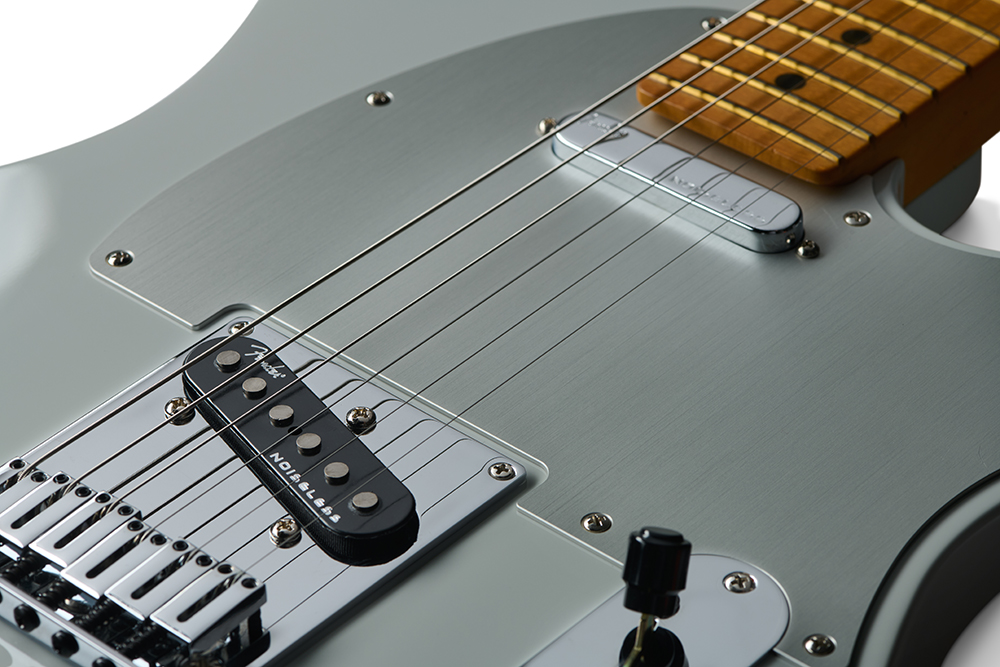
“Another was the Player series. We seemed to get it so right. The traditional life cycle of a series is you have a hump and it goes down and down after the first year. But for three or four years in a row the Player series grew in popularity. That was very surprising to me. We really felt like we hit a nerve.”
In 2023 Justin Norvell told us the secret to Fender's longevity was a sort of “healthy paranoia.” How would you characterize it?
“I think we’re fervently invested in the quality and the sound, the Fender legacy and the history of the instruments. We know why people like them – because of Leo’s designs – and we’re experts in making sure that whatever we do with Fender still has the quality Leo developed.
“We have to color within the lines, you know? It can be tough; we’re not going to chop off the horn of a Strat, but we still want to offer new Strats. I think one of the reasons it’s endured is because we love and cherish the instruments.
“But also it’s because artists love Fender, and they’re constantly making new music that inspired people around the world. The artists keep the love for Fender going. I’m not designing these for me – I’m designing them for artists to take and be inspired.”
- Explore the Fender American Ultra II range.

Matt is Deputy Editor for GuitarWorld.com. Before that he spent 10 years as a freelance music journalist, interviewing artists for the likes of Total Guitar, Guitarist, Guitar World, MusicRadar, NME.com, DJ Mag and Electronic Sound. In 2020, he launched CreativeMoney.co.uk, which aims to share the ideas that make creative lifestyles more sustainable. He plays guitar, but should not be allowed near your delay pedals.
“What blew me away was that everyone wanted the curly maple top. People were calling, saying, ‘I’ve got to have the bird inlays’”: Paul Reed Smith on raising the Standard 24, finally cracking the noise-free guitar and why John Sykes is a tone hero
“It combines unique aesthetics with modern playability and impressive tone, creating a Firebird unlike any I’ve had the pleasure of playing before”: Gibson Firebird Platypus review





![[from left] George Harrison with his Gretsch Country Gentleman, Norman Harris of Norman's Rare Guitars holds a gold-top Les Paul, John Fogerty with his legendary 1969 Rickenbacker](https://cdn.mos.cms.futurecdn.net/TuH3nuhn9etqjdn5sy4ntW.jpg)





